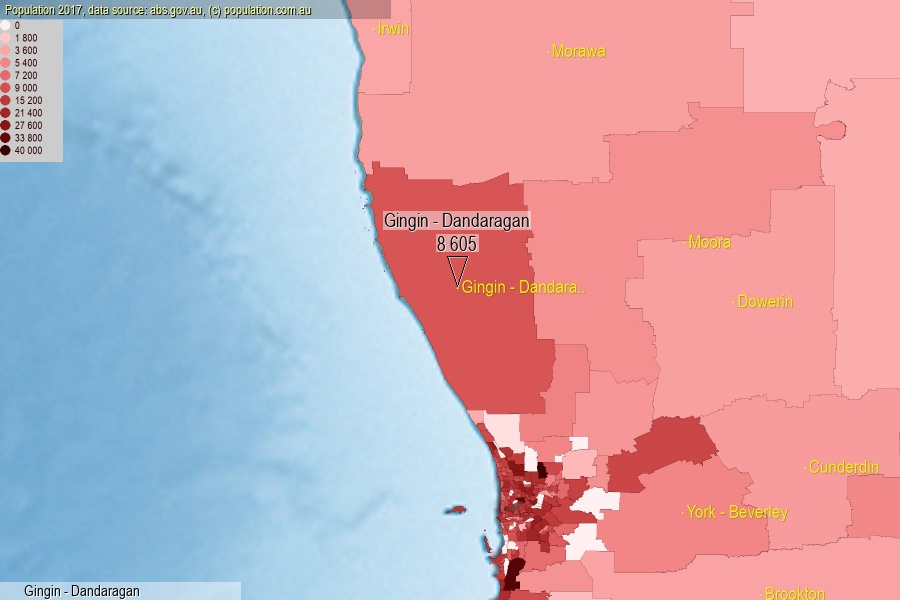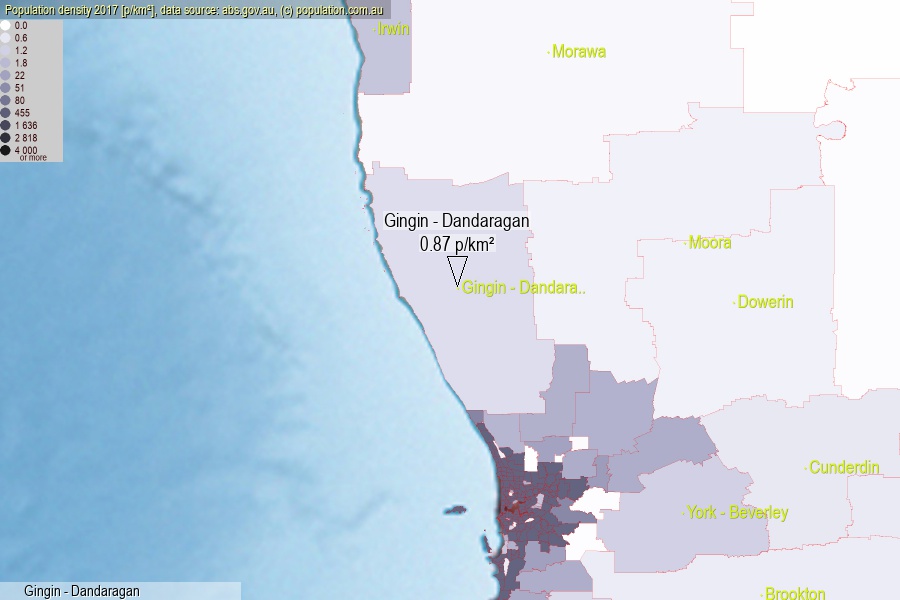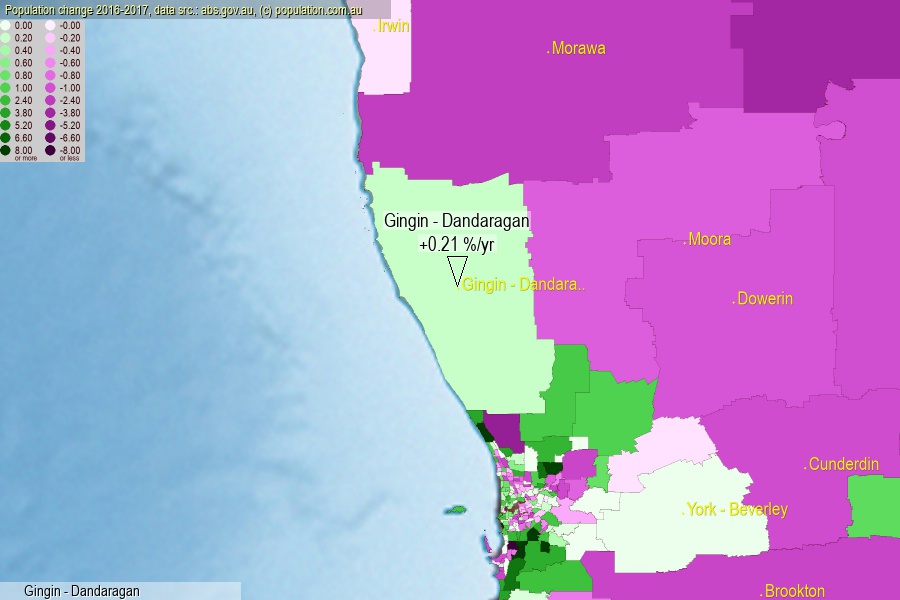 population.com.au
population.com.auLast official estimated population of Gingin - Dandaragan (as Statistical Area Level 2) was 8 605 people (on 2017-06-30)[2]. This was 0.03% of total Australian population and 0.332% of WA population. Area of Gingin - Dandaragan is 9 919.90 km², in this year population density was 0.87 p/km² . If population growth rate would be same as in period 2016-2017 (+0.21%/yr), Gingin - Dandaragan population in 2025 would be 8 750. [0]



Click to enlarge. Gingin - Dandaragan is located in the center of the images.
Population [people], population density [p./km²] and population change [%/year] [2]
View borders » (new window) [4]
[1991-1992] +1.81 %/Yr.
[1992-1993] +3.51 %/Yr.
[1993-1994] +2.66 %/Yr.
[1994-1995] +2.07 %/Yr.
[1995-1996] +1.64 %/Yr.
[1996-1997] +4.08 %/Yr.
[1997-1998] +3.53 %/Yr.
[1998-1999] +3.99 %/Yr.
[1999-2000] +3.00 %/Yr.
[2000-2001] +2.24 %/Yr.
[2001-2002] +1.40 %/Yr.
[2002-2003] +1.13 %/Yr.
[2003-2004] +0.82 %/Yr.
[2004-2005] +0.36 %/Yr.
[2005-2006] +1.29 %/Yr.
[2006-2007] +0.41 %/Yr.
[2007-2008] +1.63 %/Yr.
[2008-2009] +2.85 %/Yr.
[2009-2010] +1.04 %/Yr.
[2010-2011] +0.74 %/Yr.
[2011-2012] +2.72 %/Yr.
[2012-2013] +2.88 %/Yr.
[2013-2014] +1.29 %/Yr.
[2014-2015] -0.43 %/Yr.
[2015-2016] -0.72 %/Yr.
[2016-2017] +0.21 %/Yr.
[0] Calculated with linear interpolation from officially estimated population
[1] Read more about SA2 and Australian Statistical Geography Standard (ASGS) on abs.gov.au
[2] Population data from Australian Bureau of Statistics (Population and density: 2017; change: 2016-2017)
[3] Digital Boundaries: Australian Statistical Geography Standard (ASGS) 2016.
[4] Border coordinates are simplifyed using Ramer-Douglas-Peucker algorithm.